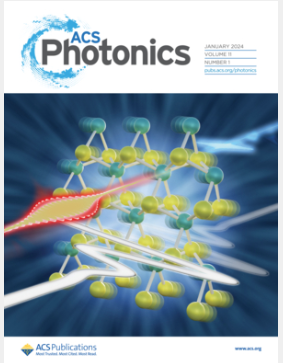Hardware–Software Co-design Computational Framework and Hardware-Aware Training for Photonic Spiking Convolutional Networks with DFB-SA Laser
IF 6.5
1区 物理与天体物理
Q1 MATERIALS SCIENCE, MULTIDISCIPLINARY
引用次数: 0
Abstract
Neuromorphic computing stands out as a highly competitive computing paradigm capable of overcoming the bottlenecks inherent in von Neumann architectures. The spiking convolutional neural network (SCNN) is a prominent type of model within the realm of neuromorphic computing. Adapting SCNNs to photonic neuromorphic hardware holds great promise for significantly increasing the computation speed and fully leveraging its low energy consumption. In this paper, we develop an end-to-end design framework of photonic SCNN. We present the design of a SCNN tailored for a photonic platform utilizing distributed feedback lasers with a saturable absorber (DFB-SA laser) as the photonic spiking neurons. We also introduce hardware implementations for key computational steps in photonic SCNNs, including the nonlinear activation function, the convolutional layer, the fully connected layer, and the max-pooling layer. Additionally, a hardware-aware training method is proposed. Furthermore, we apply the designed network to classify the MNIST, Fashion-MNIST, and CIFAR-10 datasets, achieving accuracies of 96.52%, 90.48%, and 88.45%, respectively, in simulations on the test sets. And we experimentally validate the nonlinear activation function in the MNIST dataset classification task using the DFB-SA laser, achieving a classification accuracy of 96.06%. This study introduces a novel approach to deploying neural networks on hardware, presenting a portable, modular hardware simulation model and training method. This model is anticipated to be seamlessly integrated into the future hardware–software co-design of large-scale photonic SCNNs. Part of the hardware-aware training code is available at https://github.com/Oo-Fish-oO/Hardware-aware-training

DFB-SA激光光子脉冲卷积网络的软硬件协同设计计算框架和硬件感知训练
神经形态计算作为一种高度竞争的计算范式脱颖而出,能够克服冯·诺伊曼架构固有的瓶颈。尖峰卷积神经网络(SCNN)是神经形态计算领域的一种重要模型。将scnn应用于光子神经形态硬件有望显著提高计算速度并充分利用其低能耗。在本文中,我们开发了一个光子SCNN的端到端设计框架。我们提出了一个专为光子平台设计的SCNN,利用分布式反馈激光器和可饱和吸收器(DFB-SA激光器)作为光子尖峰神经元。我们还介绍了光子scnn中关键计算步骤的硬件实现,包括非线性激活函数、卷积层、全连接层和最大池化层。此外,还提出了一种硬件感知训练方法。此外,我们将设计的网络应用于MNIST、Fashion-MNIST和CIFAR-10数据集的分类,在测试集上的模拟中,准确率分别达到96.52%、90.48%和88.45%。利用DFB-SA激光对MNIST数据集分类任务进行了非线性激活函数的实验验证,分类准确率达到96.06%。本研究介绍了一种在硬件上部署神经网络的新方法,提出了一种可移植的模块化硬件仿真模型和训练方法。该模型有望无缝集成到未来大规模光子scnn的软硬件协同设计中。部分硬件感知训练代码可在https://github.com/Oo-Fish-oO/Hardware-aware-training上获得
本文章由计算机程序翻译,如有差异,请以英文原文为准。
求助全文
约1分钟内获得全文
求助全文
来源期刊

ACS Photonics
NANOSCIENCE & NANOTECHNOLOGY-MATERIALS SCIENCE, MULTIDISCIPLINARY
CiteScore
11.90
自引率
5.70%
发文量
438
审稿时长
2.3 months
期刊介绍:
Published as soon as accepted and summarized in monthly issues, ACS Photonics will publish Research Articles, Letters, Perspectives, and Reviews, to encompass the full scope of published research in this field.
 求助内容:
求助内容: 应助结果提醒方式:
应助结果提醒方式:


